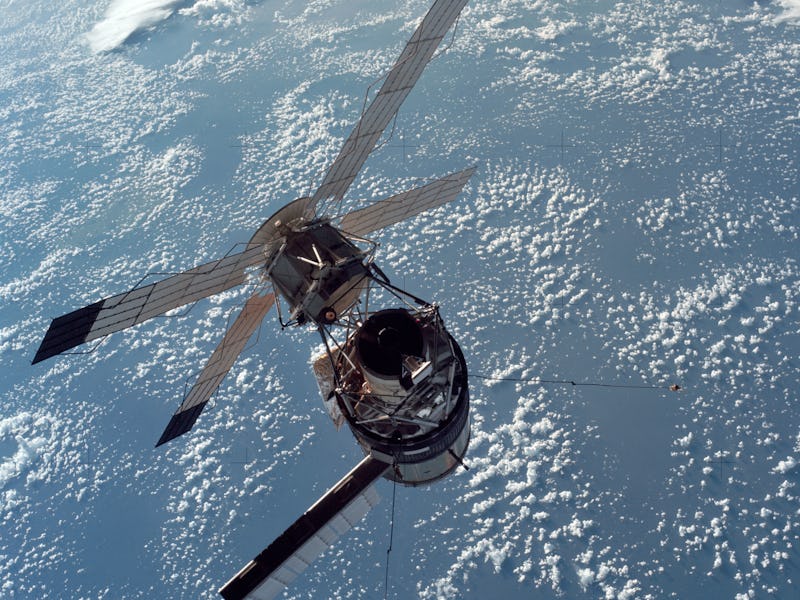What It Was Like to Almost Die in Space in 1973

In-flight space accidents over the years have caused the deaths of 18 astronauts from three countries — but if it weren’t for some quick-thinking on the part of NASA scientists in 1973, that number would be 21. A fuel leak on the second crewed mission to Skylab, America’s first space station, was nearly catastrophic for both the crew and the station itself.
NASA’s Unexplained Files delved into the incident on April 12 for its season 5 premiere. The Science Channel show explores some of the most exciting stories from NASA’s past and brings them to life with new interviews and CGI. Reanimating history is disquieting when it involves imagining near-lethal disaster, as in this episode.
The three astronauts on the mission: Owen F. Garriott, Jack R. Lousma, and Alan L. Bean.
About two weeks before the end of a 59-day mission, the crew noticed a strange phenomenon outside the window of Skylab: A storm of snowflakes appeared to be gushing past the craft. “Boy, a real blizzard came by,” said Astronaut Owen K. Garriott.
The problem with that? There’s no weather in space. At least not the way we have weather on Earth. Space is a near-vacuum, so water vapor can’t form into clouds or snow. The crew decided that there had to be a different explanation. They speculated that it might be space debris from other orbiting space craft; those small pieces of waste move at six times the speed of a rifle bullet and easily could’ve harmed Skylab.
After much deliberation about the nature of the mysterious danger — an unexpected phenomenon occurring in the middle of a space mission is rarely good — the astronauts finally determined that it was Apollo CSM-117’s fuel, which was leaking and immediately freezing. Apollo was the spacecraft the crew took to reach Skylab, and they also needed it to get back to Earth.
“This could’ve been the end of Skylab,” a historian told NASA’s Unexplained Files. Another described the situation as a “beyond nightmare scenario.” NASA workers on the ground hurried to plan a rescue mission for the astronauts so they could return to Earth before Skylab became a “2.2 billion dollar coffin.”
Before they finished the rescue plans, NASA scientists came up with another idea: The crew would try to return to Earth using just two of Apollo’s four thrusters. It was an unprecedented reentry method, but everyone — including the astronauts — agreed to try it.
It was a tough descent but all three crewmen survived Apollo’s landing into the ocean.
Near-misses like these, as well as 18 actual casualties, don’t deter the enthusiasm that folks have for exploring space. SpaceX will send two private citizens around the moon in late 2018, and if our current thirst for space exploration is any indication, that’s just the next step in building a long legacy of exciting — and risky — human space travel.
NASA’s Unexplained Files airs on the Science Channel.